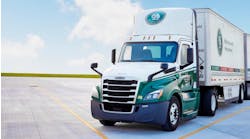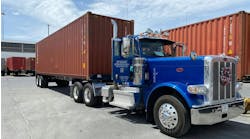Ben Vander Griend believes engines can no longer be thought of as “separate” components from a truck. Instead he believes they must be considered an integral part of the vehicle. Otherwise, it simply won’t be able to meet the expectations of fleets and drivers alike.
“You need to build a truck that performs– a tool that makes money for the owner,” Vander Griend, assistant chief engineer-powertrain & chassis development for Kenworth Truck Co., told FleetOwner. “That puts a lot of weight on the shoulders of engineers like me.
“You can no longer separate one part from the other; it all must be thought of as one package,” he explained. “How the chassis accommodates the engine and how they, together, impact aerodynamics is only one example of that integrated relationship.”
Vander Griend spoke to FleetOwner at a Kenworth media event held this week in Mount Vernon, WA, at the Paccar Technical Center, which is operated by the OEM’s parent firm.
Smoothing out the relationship between the chassis and all of its components– the engine, transmission, axles, etc.– is increasing the role of electronics in the vehicle, he added.
“Electronics are an enabler; they keep the engine and vehicle aligned to meet fuel economy targets, performance needs, and emission regulations simultaneously,” he explained. “Also, we are fully aware that though a component may be built by a supplier, it’s on our truck, surrounded by our name, so the customer is going to expect us to be the primary point of contact for taking care of it.”
It all harkens back to the two primary qualities any commercial truck must have in today’s market: reliability and durability. Without those two characteristics, regardless of emission compliance, performance, or fuel efficiency, customers won’t touch it.
“You can’t rely on just one side of the equation to meet customers needs,” Vander Griend said. “You must have the entire winning combination – superior quality, reliability, durability, fuel economy and cost competitiveness. It’s what’s required in trucking today.”
To comment on this article, write to Sean Kilcarr at [email protected]


